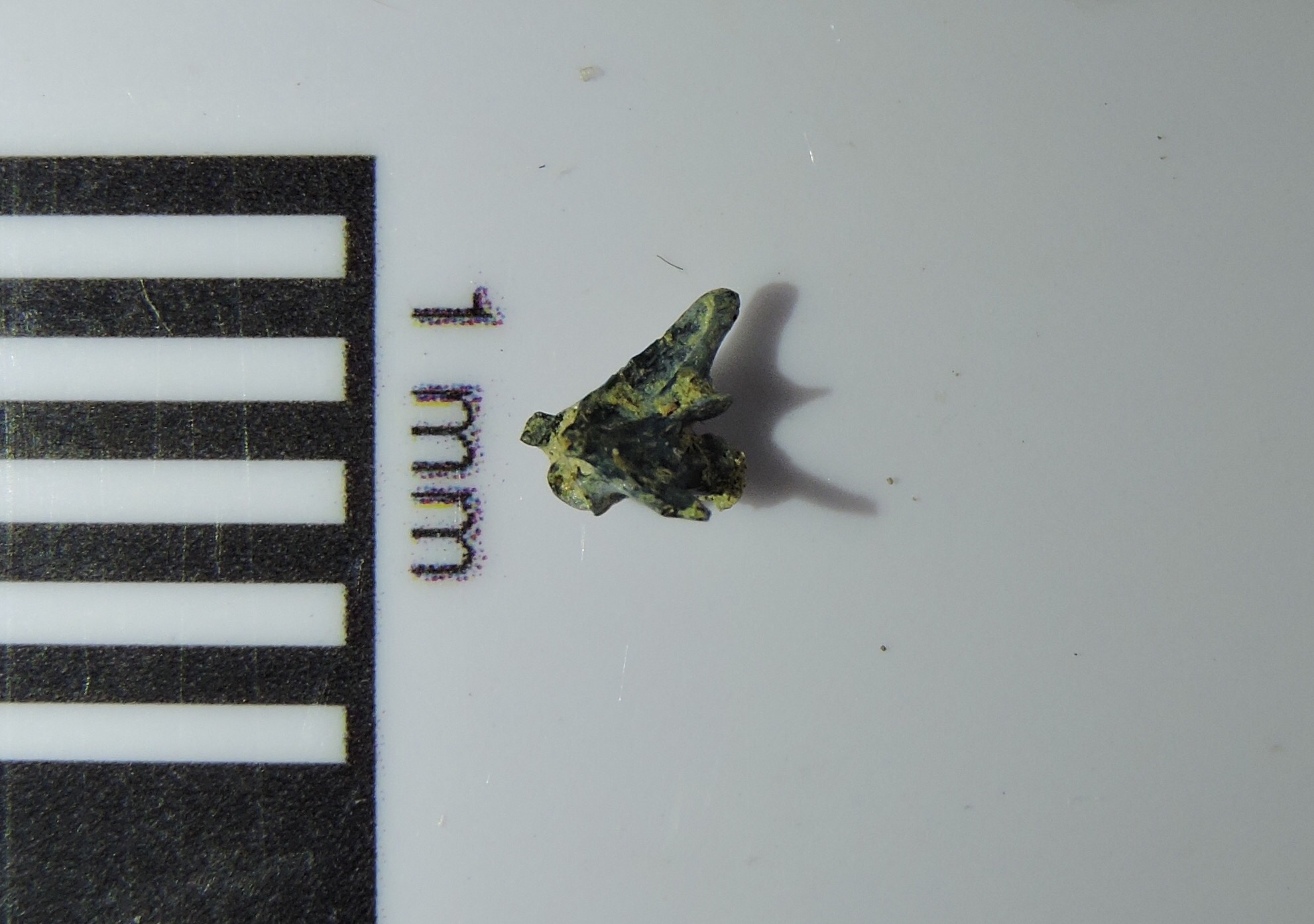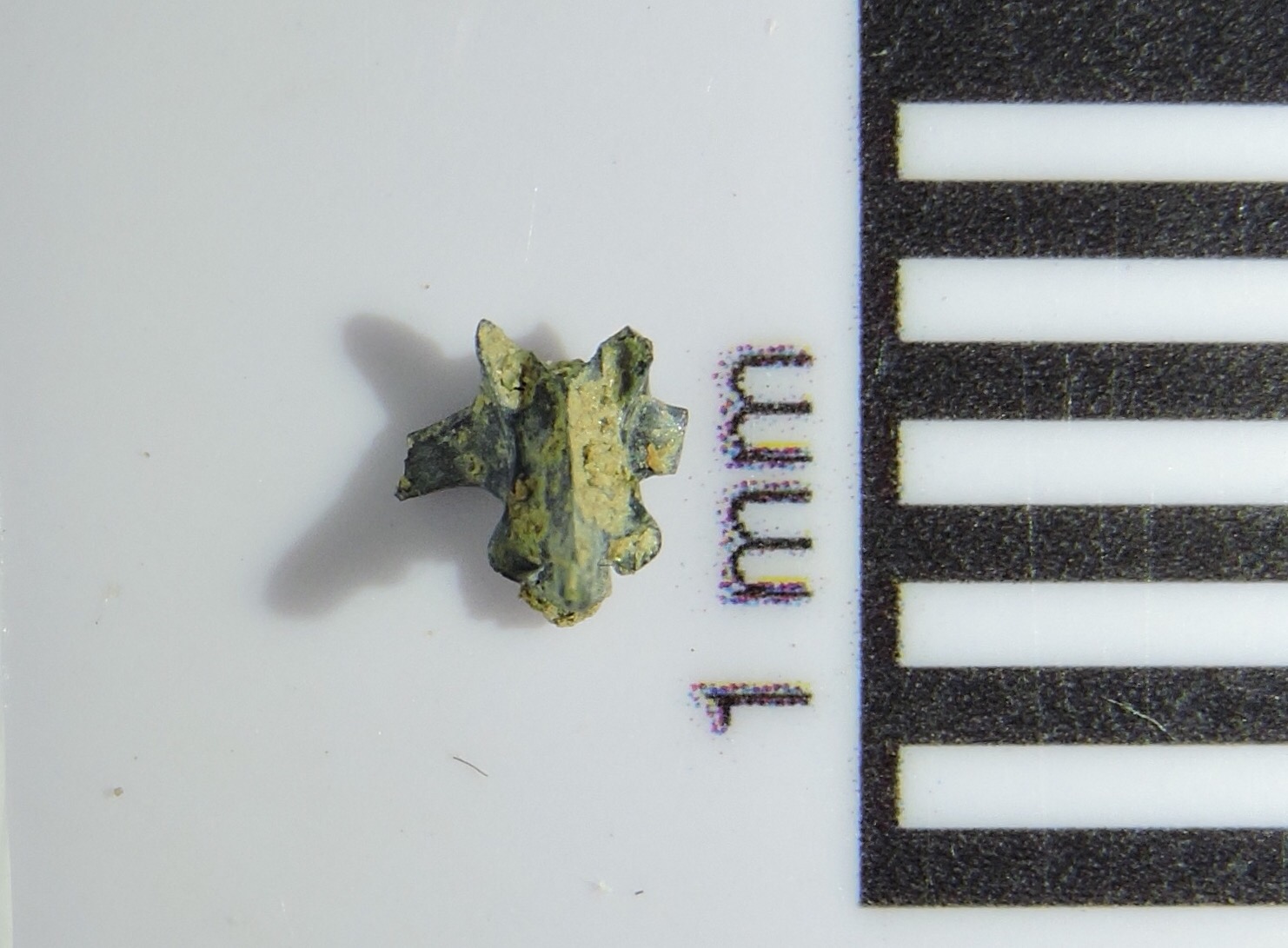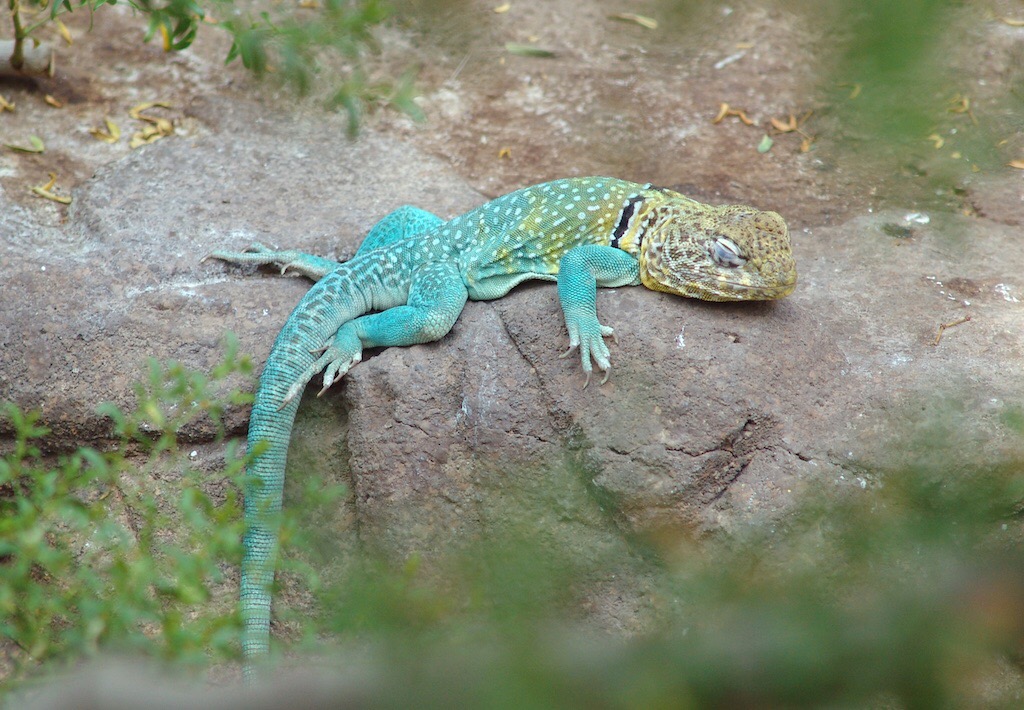 From a geological standpoint the Ice Age was not very long ago. Almost all the plant and animal species around today are survivors of the extinction that took place at the end of the Pleistocene. In many Ice Age deposits, while extinct megafauna get the most attention, the most widespread fossils are from species that are still with us today.Above is a caudal (tail) vertebra from a collared lizard of the genus Crotaphytus. It's shown in left lateral view, with the front of the bone to the left. Below is a dorsal view of the same bone, with anterior toward the top:
From a geological standpoint the Ice Age was not very long ago. Almost all the plant and animal species around today are survivors of the extinction that took place at the end of the Pleistocene. In many Ice Age deposits, while extinct megafauna get the most attention, the most widespread fossils are from species that are still with us today.Above is a caudal (tail) vertebra from a collared lizard of the genus Crotaphytus. It's shown in left lateral view, with the front of the bone to the left. Below is a dorsal view of the same bone, with anterior toward the top: In this view we can see that the transverse processes that stick off each side of the vertebra are broken, as is the right prezygopophysis (the prezygopophyses are the bony spurs projecting off the front of the vertebra; they would articulate with the vertebra immediately ahead of this one). Besides this slight damage, the black color suggests this bone has been burned in a fire, as is the case with a number of other bones from the Diamond Valley Lake deposits.Collared lizards are widespread in Mexico and the southern United States west of the Mississippi River, especially in more arid environments. They are fast-moving carnivorous lizards that feed on insects and small mammals. There are several living species, some of which include brightly-colored males with banding around their necks that inspired their common name. Unfortunately, we probably can't identify the species of collared lizard based solely on an isolated tail vertebra, but we can say that these colorful lizards were present in the region just as they are today.
In this view we can see that the transverse processes that stick off each side of the vertebra are broken, as is the right prezygopophysis (the prezygopophyses are the bony spurs projecting off the front of the vertebra; they would articulate with the vertebra immediately ahead of this one). Besides this slight damage, the black color suggests this bone has been burned in a fire, as is the case with a number of other bones from the Diamond Valley Lake deposits.Collared lizards are widespread in Mexico and the southern United States west of the Mississippi River, especially in more arid environments. They are fast-moving carnivorous lizards that feed on insects and small mammals. There are several living species, some of which include brightly-colored males with banding around their necks that inspired their common name. Unfortunately, we probably can't identify the species of collared lizard based solely on an isolated tail vertebra, but we can say that these colorful lizards were present in the region just as they are today.
